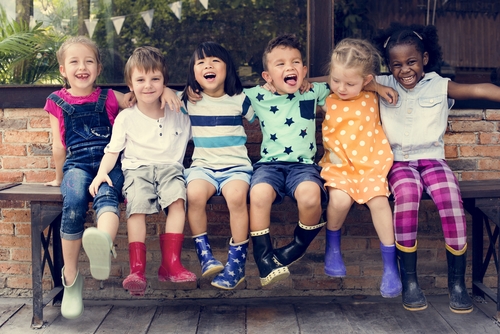As an early years consultant with over 15 years of experience in British nurseries and preschools, I’ve witnessed a significant evolution in how we understand and support neurodivergent children. Today, I’d like to share insights and practical strategies that can help create truly inclusive early years environments.
Understanding Neurodiversity in Early Years
Neurodiversity encompasses various ways brains can develop and function differently, including autism, ADHD, dyslexia, and other developmental differences. In early years settings, we might notice children showing different patterns of engagement, communication, or sensory processing. It’s crucial to remember that these differences aren’t deficits – they’re natural variations in human development.
Early Recognition and Support
Early years practitioners are often among the first to notice when a child might be developing differently. Some common patterns we might observe include:
Communication and Social Interaction
Rather than seeing a child as ‘refusing to engage’, we should consider that they might be communicating differently. For instance, a child might:
- Use movement rather than words to express themselves
- Show intense focus on particular activities
- Communicate through echoing words or phrases
- Prefer parallel play over direct interaction
Sensory Processing
Many neurodivergent children experience sensory information differently. In our settings, we might notice:
- Strong reactions to certain textures, sounds, or lights
- Seeking out specific sensory experiences repeatedly
- Becoming overwhelmed in busy environments
- Showing particular movement patterns or needing to move frequently
Creating Supportive Environments
Physical Space Organisation
Our nursery environments can make a significant difference. Consider:
Creating quiet spaces where children can retreat when feeling overwhelmed. In my experience, a simple pop-up tent with soft cushions can serve as an excellent ‘calm corner’.
Establishing clear visual boundaries between different areas. Using rugs, shelving, or tape on the floor can help children understand where different activities happen.
Providing sensory-friendly options throughout the space. For example, having noise-cancelling headphones available or offering weighted lap pads during circle time.
Routine and Transitions
Predictability often helps neurodivergent children feel secure. We can support this by:
Using visual timetables that show the day’s activities clearly. Photographs work well for younger children, while simple drawings might suit others.
Giving advance notice before transitions. A sand timer or musical cue can help children understand when an activity is about to end.
Communication Approaches
Different children need different communication tools. Consider implementing:
Visual supports alongside verbal instructions. Simple picture cards for common activities or emotions can be invaluable.
Alternative communication methods. Some children might benefit from using signing, picture exchange systems, or technology-based communication aids.
Working with Families
Partnership with families is absolutely crucial. In my practice, I’ve found these approaches particularly effective:
Regular, Open Communication
Establish consistent communication channels that work for each family. Some might prefer quick chats at pickup, while others might value detailed email updates or communication books.
Sharing Strategies
Create a two-way flow of information about what works at home and in the setting. For example, if a child responds well to certain phrases or routines at home, we can incorporate these into our practice.
Celebrating Progress
Share positive observations and celebrations of progress, however small. This helps build confidence and understanding for both families and practitioners.
Professional Development
As practitioners, we must constantly update our knowledge and skills. Consider:
Attending specialist training courses on supporting neurodivergent children
Networking with other settings to share best practices
Keeping up with current research and guidelines
Practical Activity Ideas
Here are some tried-and-tested activities that support all children while being particularly beneficial for neurodivergent learners:
Sensory Play Opportunities
Provide various sensory experiences through:
– Different textures in sand and water play
– Calm-down bottles with various materials
– Playdough with different scents and textures
Movement Breaks
Incorporate regular movement opportunities:
– Animal movement games
– Dancing with scarves
– Balance beam activities
Social Skills Development
Support social interaction through:
- Small group activities with clear roles
- Turn-taking games with visual supports
- Parallel play opportunities
Looking Forward
As our understanding of neurodiversity continues to grow, our approach in early years settings must evolve too. The key is to remain flexible, observant, and responsive to each child’s individual needs while maintaining high expectations for all children’s learning and development.
Remember, supporting neurodivergent children isn’t about ‘fixing’ differences – it’s about creating environments where all children can thrive in their own way. Through thoughtful adaptations and inclusive practices, we can ensure every child has the opportunity to reach their full potential.
Additional Resources
For further support and information, consider:
- The National Autistic Society (www.autism.org.uk)
- ICAN (www.ican.org.uk)
- The Dyspraxia Foundation (www.dyspraxiafoundation.org.uk)
For more information about supporting neurodivergent children in early years settings, consider our specialist training courses at National Nursery Training. Visit our website to learn more about our Level 3 Award in Supporting Children with Special Educational Needs and Disabilities.


Comments are closed.